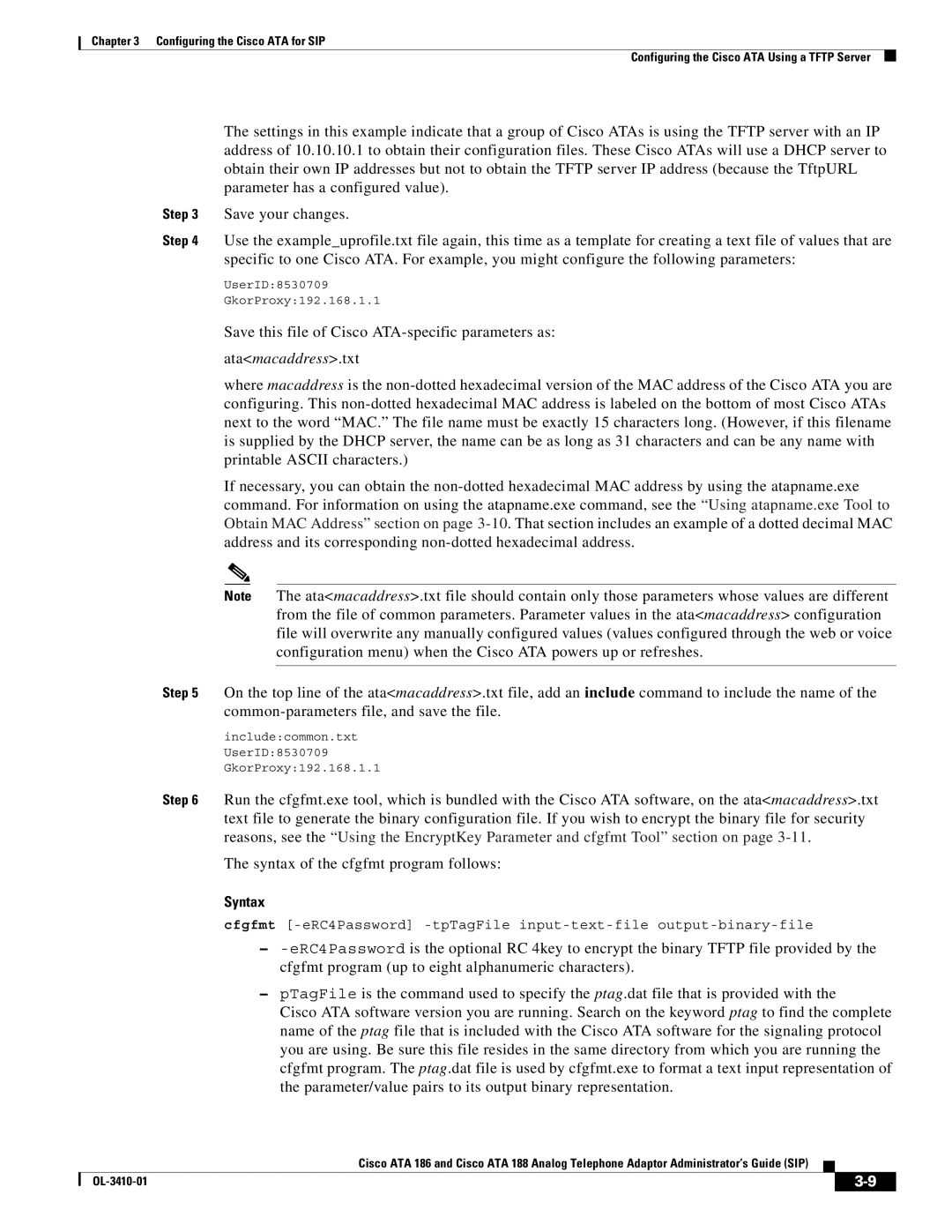
Chapter 3 Configuring the Cisco ATA for SIP
Configuring the Cisco ATA Using a TFTP Server
The settings in this example indicate that a group of Cisco ATAs is using the TFTP server with an IP address of 10.10.10.1 to obtain their configuration files. These Cisco ATAs will use a DHCP server to obtain their own IP addresses but not to obtain the TFTP server IP address (because the TftpURL parameter has a configured value).
Step 3 Save your changes.
Step 4 Use the example_uprofile.txt file again, this time as a template for creating a text file of values that are specific to one Cisco ATA. For example, you might configure the following parameters:
UserID:8530709
GkorProxy:192.168.1.1
Save this file of Cisco ATA-specific parameters as:
ata<macaddress>.txt
where macaddress is the
If necessary, you can obtain the
Note The ata<macaddress>.txt file should contain only those parameters whose values are different from the file of common parameters. Parameter values in the ata<macaddress> configuration file will overwrite any manually configured values (values configured through the web or voice configuration menu) when the Cisco ATA powers up or refreshes.
Step 5 On the top line of the ata<macaddress>.txt file, add an include command to include the name of the
include:common.txt
UserID:8530709
GkorProxy:192.168.1.1
Step 6 Run the cfgfmt.exe tool, which is bundled with the Cisco ATA software, on the ata<macaddress>.txt text file to generate the binary configuration file. If you wish to encrypt the binary file for security reasons, see the “Using the EncryptKey Parameter and cfgfmt Tool” section on page
The syntax of the cfgfmt program follows:
Syntax
cfgfmt
–
–pTagFile is the command used to specify the ptag.dat file that is provided with the
Cisco ATA software version you are running. Search on the keyword ptag to find the complete name of the ptag file that is included with the Cisco ATA software for the signaling protocol you are using. Be sure this file resides in the same directory from which you are running the cfgfmt program. The ptag.dat file is used by cfgfmt.exe to format a text input representation of the parameter/value pairs to its output binary representation.
Cisco ATA 186 and Cisco ATA 188 Analog Telephone Adaptor Administrator’s Guide (SIP)
|
| ||
|
|
